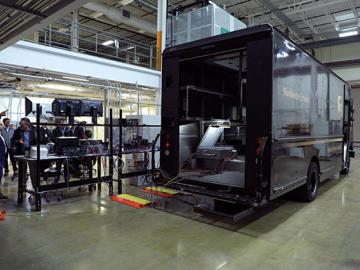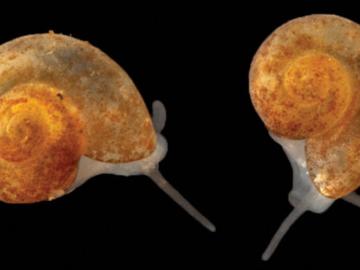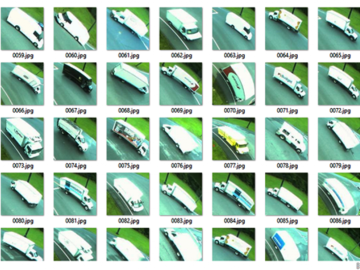
Filter News
Area of Research
News Topics
- (-) Advanced Reactors (2)
- (-) Artificial Intelligence (12)
- (-) Big Data (5)
- (-) Clean Water (5)
- (-) Grid (16)
- (-) Partnerships (5)
- (-) Summit (4)
- (-) Transportation (17)
- 3-D Printing/Advanced Manufacturing (25)
- Bioenergy (14)
- Biology (9)
- Biomedical (11)
- Biotechnology (2)
- Buildings (11)
- Chemical Sciences (5)
- Composites (2)
- Computer Science (21)
- Coronavirus (11)
- Cybersecurity (13)
- Energy Storage (21)
- Environment (24)
- Fossil Energy (2)
- High-Performance Computing (6)
- Hydropower (1)
- Machine Learning (11)
- Materials (10)
- Materials Science (12)
- Mathematics (2)
- Mercury (1)
- Microelectronics (1)
- Microscopy (3)
- Nanotechnology (5)
- National Security (24)
- Neutron Science (55)
- Nuclear Energy (5)
- Physics (1)
- Polymers (2)
- Quantum Computing (1)
- Quantum Science (3)
- Security (8)
- Simulation (1)
- Space Exploration (2)
Media Contacts

ORNL researchers have developed an intelligent power electronic inverter platform that can connect locally sited energy resources such as solar panels, energy storage and electric vehicles and smoothly interact with the utility power grid.

From materials science and earth system modeling to quantum information science and cybersecurity, experts in many fields run simulations and conduct experiments to collect the abundance of data necessary for scientific progress.

Ada Sedova’s journey to Oak Ridge National Laboratory has taken her on the path from pre-med studies in college to an accelerated graduate career in mathematics and biophysics and now to the intersection of computational science and biology

Researchers at the Department of Energy’s Oak Ridge National Laboratory (ORNL) in late February demonstrated a 20-kilowatt bi-directional wireless charging system installed on a UPS medium-duty, plug-in hybrid electric delivery truck.

In the race to identify solutions to the COVID-19 pandemic, researchers at the Department of Energy’s Oak Ridge National Laboratory are joining the fight by applying expertise in computational science, advanced manufacturing, data science and neutron science.

Sometimes conducting big science means discovering a species not much larger than a grain of sand.

Each year, approximately 6 billion gallons of fuel are wasted as vehicles wait at stop lights or sit in dense traffic with engines idling, according to US Department of Energy estimates.

A typhoon strikes an island in the Pacific Ocean, downing power lines and cell towers. An earthquake hits a remote mountainous region, destroying structures and leaving no communication infrastructure behind.

While Tsouris’ water research is diverse in scope, its fundamentals are based on basic science principles that remain largely unchanged, particularly in a mature field like chemical engineering.

Students often participate in internships and receive formal training in their chosen career fields during college, but some pursue professional development opportunities even earlier.


